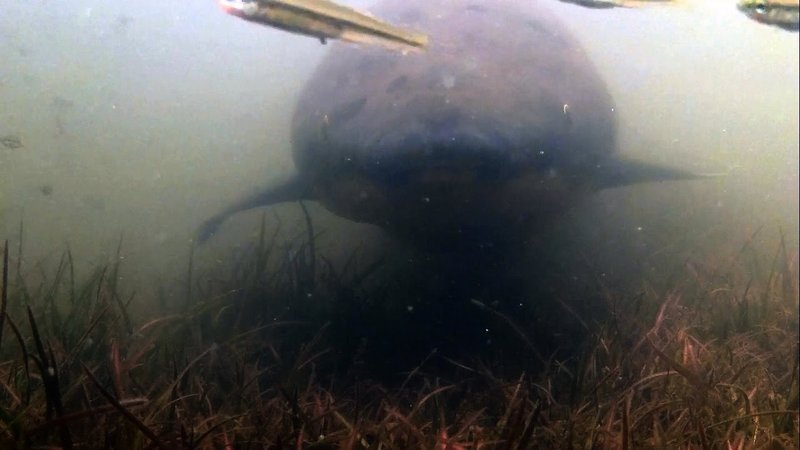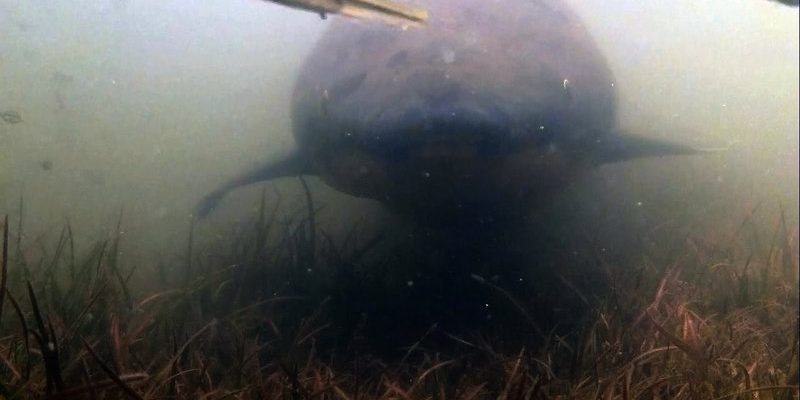
If you’ve ever imagined an ancient creature that might just as easily belong to the age of dinosaurs as to today’s world, let me introduce you to the lungfish. This fascinating fish is not just another face in the aquatic crowd; it’s a living link to our planet’s distant past. Imagine a fish that can breathe air and survive in the mud during a drought. Sounds like something out of a science fiction story, right? Well, that’s the reality of lungfish.
Lungfish are a remarkable group of freshwater fish that have developed some unique adaptations over millions of years. They inhabit shallow waters in Africa, South America, and Australia, and their ability to thrive in harsh environments makes them truly special. So, what’s the secret behind these incredible creatures? Let’s dive in and explore the world of lungfish together!
What Are Lungfish?
Lungfish belong to the order Dipnoi, which means “two lungs” in Greek. Unlike most fish that breathe through gills, lungfish have developed a pair of lungs for extracting oxygen from the air. This fascinating adaptation allows them to survive in oxygen-poor waters where other fish might not make it. Picture it like this: while most fish are confined to the water, lungfish can also take a deep breath and venture into the air, much like a hybrid between a fish and a land-dwelling creature.
There are six known species of lungfish, with varying characteristics and habitats. The most well-known species include the African lungfish, South American lungfish, and the Australian lungfish. Each has its own unique traits and preferences when it comes to their aquatic homes. For instance, African lungfish can actually burrow into mud for several months during dry seasons, slowing their metabolism to survive until water returns.
Interesting Facts About Lungfish
| Species | Size | Habitat | Diet | Lifespan |
| African Lungfish | Up to 4 feet | Freshwater lakes and rivers | Insects, crustaceans, and small fish | Up to 25 years |
| South American Lungfish | About 2 feet | Slow-moving waters | Omnivorous | Up to 20 years |
| Australian Lungfish | Up to 6 feet | Swamps and rivers | Plants and small animals | Over 100 years |
How Lungfish Breathe
The lungs of a lungfish are quite different from what you’d find in humans or other mammals. Instead of being located in a chest cavity, a lungfish’s lungs are adapted to be more like swim bladders, helping them stay buoyant in the water. When lungfish are submerged, they primarily breathe using their gills. But when the oxygen levels drop, they switch to breathing air through their lungs. It’s like having a backup plan ready to go, which is crucial for survival in murky waters.
Here’s something really interesting: lungfish can gulp air at the surface when they need oxygen, and they can hold their breath for significant periods. Some species can even remain out of water for days, breathing air through their lungs. This capability comes in handy during the dry season when their habitats might dry up. Imagine being able to camp out in your backyard while the rest of your friends are stuck indoors!
Habitat and Distribution
Lungfish have a patchy but fascinating distribution. They are found in various parts of the world, with three main genera inhabiting Africa, South America, and Australia. Each species has adapted to its specific environment, from the warm rivers of Africa to the slow, murky waters of South America. The African lungfish, for example, thrives in seasonal floodplains where water levels can fluctuate dramatically.
They prefer shallow waters where they can easily access both aquatic and terrestrial food sources. During dry spells, they are known to burrow into the mud and enter a state of dormancy. It’s almost as if they’ve mastered the art of waiting—waiting for the rains to come back and restore their watery homes. This behavior not only shows their adaptability but also their resilience as a species.
Diet and Feeding Habits
Lungfish are *omnivores*, which means they have a varied diet. Depending on their species, they might munch on plants, insects, small fish, and even crustaceans. Picture this: a lungfish gliding through murky waters, using its keen sense of smell to hunt for the tastiest morsels among the weeds. With their elongated bodies and powerful jaws, they’re well-equipped to capture their prey.
In their natural habitats, lungfish might feast on whatever is available, helping to keep the ecosystem balanced. They play a crucial role in their environments by controlling insect populations and serving as a food source for larger predators. Their adaptability in diet makes them quite successful survivors in challenging conditions.
Reproduction and Life Cycle
When it comes to reproduction, lungfish have their own unique ways of ensuring the survival of their young. Most species are known to be *seasonal spawners*, meaning they time their breeding to coincide with the wet season when conditions are favorable. During these times, a male lungfish will typically attract a female by performing specific courtship displays. It’s a little like a dance in the water—how cool is that?
After mating, the female lays her eggs in nests made of vegetation. The male usually guards these nests until the eggs hatch, which can take a few days to a week. Once the tiny lungfish hatch, they’re quite vulnerable, but they quickly learn to adapt to their surrounding environment. It’s important that they grow strong and fast, as their habitats can change dramatically with the seasons.
Conservation Status
While lungfish are incredible creatures, they are not without threats. Various species face challenges due to habitat loss, pollution, and climate change. The African lungfish is particularly vulnerable due to habitat destruction from agriculture and urban expansion. Conservation efforts are crucial to protect these ancient fish and their environments.
Organizations and researchers are working to monitor lungfish populations and raise awareness about their unique ecological roles. Protecting freshwater habitats is essential not just for lungfish, but for myriad other species that share their ecosystems. Just as we hope to protect endangered species, we should have the same passion for preserving the remarkable adaptations of the lungfish.
The lungfish is more than just a fish; it’s a testament to the power of evolution and survival. With its ability to breathe air, endure tough conditions, and thrive in diverse habitats, the lungfish teaches us about resilience in nature. Its connection to our planet’s history offers a glimpse into how life can adapt and flourish under changing circumstances.
Next time you think about underwater creatures, take a moment to appreciate the lungfish. These remarkable beings remind us of the incredible wonders of the natural world and inspire curiosity about the mysteries that still lie beneath the surface.
FAQ
Why do lungfish have lungs instead of just gills?
Lungfish developed lungs as an adaptation to survive in environments where oxygen levels can drop significantly. This unique feature allows them to breathe air when water oxygen levels are insufficient, giving them a better chance of survival in challenging conditions.
How long can lungfish survive out of water?
Some lungfish can survive out of water for several days, thanks to their ability to breathe air through their lungs. They can enter a state of dormancy during dry periods, burrowing into mud to conserve water and energy.
What do lungfish eat?
Lungfish are *omnivores*, which means their diet includes both plant and animal matter. They typically feast on insects, crustaceans, and small fish, adapting their diet based on the availability of food in their environment.
Are lungfish endangered?
Some species of lungfish are considered vulnerable or endangered due to habitat loss, pollution, and climate change. Conservation efforts are critical to help protect these unique creatures and their ecosystems.
How do lungfish reproduce?
Lungfish are seasonal spawners, with breeding timed to the wet season. Males attract females through courtship displays, and females lay eggs in nests made of vegetation, which males guard until they hatch.
Where can lungfish be found?
Lungfish are native to freshwater habitats in Africa, South America, and Australia. Each species has adapted to its specific environment, from rivers and lakes to swamps and floodplains.
Can lungfish be kept as pets?
While keeping lungfish as pets is possible, it requires a significant commitment. They need large aquariums with excellent filtration and water quality, along with a varied diet. Understanding their needs is crucial for their health and well-being.
How fast can lungfish swim?
Lungfish are not particularly fast swimmers compared to other fish. They tend to move slowly and gracefully through the water, relying more on their ability to breathe air and adapt to their environments rather than speed.
What is the lifespan of a lungfish?
The lifespan of a lungfish varies by species, with some living up to 25 years or more. The Australian lungfish, for example, is known for its longevity and can live for over 100 years in favorable conditions.
Do lungfish have any predators?
Yes, lungfish can fall prey to larger fish and wildlife in their habitats. However, their ability to hide in murky waters and their burrowing behavior during dry seasons provide them with some protection against predators.

